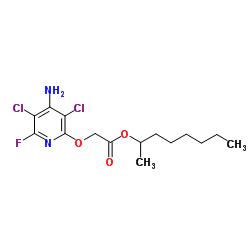Approach for extrapolating in vitro metabolism data to refine bioconcentration factor estimates.
Christina E Cowan-Ellsberry, Scott D Dyer, Susan Erhardt, Mary Jo Bernhard, Amy L Roe, Martin E Dowty, Annie V Weisbrod
文献索引:Chemosphere 70(10) , 1804-17, (2008)
全文:HTML全文
摘要
National and international chemical management programs are assessing thousands of chemicals for their persistence, bioaccumulative and environmental toxic properties; however, data for evaluating the bioaccumulation potential for fish are limited. Computer based models that account for the uptake and elimination processes that contribute to bioaccumulation may help to meet the need for reliable estimates. One critical elimination process of chemicals is metabolic transformation. It has been suggested that in vitro metabolic transformation tests using fish liver hepatocytes or S9 fractions can provide rapid and cost-effective measurements of fish metabolic potential, which could be used to refine bioconcentration factor (BCF) computer model estimates. Therefore, recent activity has focused on developing in vitro methods to measure metabolic transformation in cellular and subcellular fish liver fractions. A method to extrapolate in vitro test data to the whole body metabolic transformation rates is presented that could be used to refine BCF computer model estimates. This extrapolation approach is based on concepts used to determine the fate and distribution of drugs within the human body which have successfully supported the development of new pharmaceuticals for years. In addition, this approach has already been applied in physiologically-based toxicokinetic models for fish. The validity of the in vitro to in vivo extrapolation is illustrated using the rate of loss of parent chemical measured in two independent in vitro test systems: (1) subcellular enzymatic test using the trout liver S9 fraction, and (2) primary hepatocytes isolated from the common carp. The test chemicals evaluated have high quality in vivo BCF values and a range of logK(ow) from 3.5 to 6.7. The results show very good agreement between the measured BCF and estimated BCF values when the extrapolated whole body metabolism rates are included, thus suggesting that in vitro biotransformation data could effectively be used to reduce in vivo BCF testing and refine BCF model estimates. However, additional fish physiological data for parameterization and validation for a wider range of chemicals are needed.
相关化合物
| 结构式 | 名称/CAS号 | 分子式 | 全部文献 |
|---|---|---|---|
 |
氟草烟 1-甲基庚基酯
CAS:81406-37-3 |
C15H21Cl2FN2O3 |
|
Dissipation and residues of fluroxypyr-meptyl in rice and en...
2011-04-01 [Bull. Environ. Contam. Toxicol. 86(4) , 449-53, (2011)] |
|
Stereoselective metabolism of the herbicide fluroxypyr methy...
2011-07-01 [Chirality 23(6) , 472-8, (2011)] |
|
Metabolism of fluroxypyr, fluroxypyr methyl ester, and the h...
2000-07-01 [Drug Metab. Dispos. 28(7) , 748-54, (2000)] |
|
Metabolism of fluroxypyr, fluroxypyr methyl ester, and the h...
2000-07-01 [Drug Metab. Dispos. 28(7) , 755-9, (2000)] |
|
Effects of different dilution water types on the acute toxic...
1992-12-01 [Bull. Environ. Contam. Toxicol. 49(6) , 914-21, (1992)] |